Lactobacillus reuteri DSM 17938 feeding of healthy newborn mice regulates immune responses while modulating gut microbiota and boosting beneficial metabolites
- PMID: 31482733
- PMCID: PMC6962498
- DOI: 10.1152/ajpgi.00107.2019
Lactobacillus reuteri DSM 17938 feeding of healthy newborn mice regulates immune responses while modulating gut microbiota and boosting beneficial metabolites
Abstract
Early administration of Lactobacillus reuteri DSM 17938 (LR) prevents necrotizing enterocolitis and inhibits regulatory T-cell (Treg)-deficiency-associated autoimmunity in mice. In humans, LR reduces crying time in breastfed infants with colic, modifies severity in infants with acute diarrheal illnesses, and improves pain in children with functional bowel disorders. In healthy breastfed newborns with evolving microbial colonization, it is unclear if early administration of LR can modulate gut microbiota and their metabolites in such a way as to promote homeostasis. We gavaged LR (107 colony-forming units/day, daily) to C57BL/6J mice at age of day 8 for 2 wk. Both male and female mice were investigated in these experiments. We found that feeding LR did not affect clinical phenotype or inflammatory biomarkers in plasma and stool, but LR increased the proportion of Foxp3+ regulatory T cells (Tregs) in the intestine. LR also increased bacterial diversity and the relative abundance of p_Firmicutes, f_Lachnospiraceae, f_Ruminococcaceae, and genera Clostridium and Candidatus arthromitus, while decreasing the relative abundance of p_Bacteriodetes, f_Bacteroidaceae, f_Verrucomicrobiaceae, and genera Bacteroides, Ruminococcus, Akkermansia, and Sutterella. Finally, LR exerted a major impact on the plasma metabolome, upregulating amino acid metabolites formed via the urea, tricarboxylic acid, and methionine cycles and increasing tryptophan metabolism. In conclusion, early oral administration of LR to healthy breastfed mice led to microbial and metabolic changes which could be beneficial to general health.NEW & NOTEWORTHY Oral administration of Lactobacillus reuteri DSM 17938 (LR) to healthy breastfed mice promotes intestinal immune tolerance and is linked to proliferation of beneficial gut microbiota. LR upregulates plasma metabolites that are involved in the urea cycle, the TCA cycle, methionine methylation, and the polyamine pathway. Herein, we show that LR given to newborn mice specifically increases levels of tryptophan metabolites and the purine nucleoside adenosine that are known to enhance tolerance to inflammatory stimuli.
Keywords: Bacteroidetes; Firmicutes; biomarker; healthy; intestine; lactobacillus reuteri; metabolites; microbiota; newborn; probiotic.
Conflict of interest statement
No conflicts of interest, financial or otherwise, are declared by the authors.
Figures

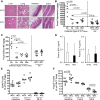

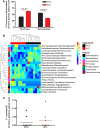
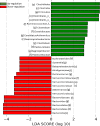
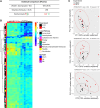

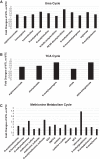
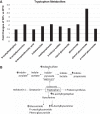


Similar articles
-
Limosilactobacillus reuteri and Lacticaseibacillus rhamnosus GG differentially affect gut microbes and metabolites in mice with Treg deficiency.Am J Physiol Gastrointest Liver Physiol. 2021 Jun 1;320(6):G969-G981. doi: 10.1152/ajpgi.00072.2021. Epub 2021 Mar 31. Am J Physiol Gastrointest Liver Physiol. 2021. PMID: 33787352 Free PMC article.
-
Protective effect of Lactobacillus reuteri DSM 17938 against experimental necrotizing enterocolitis is mediated by Toll-like receptor 2.Am J Physiol Gastrointest Liver Physiol. 2018 Aug 1;315(2):G231-G240. doi: 10.1152/ajpgi.00084.2017. Epub 2018 Apr 12. Am J Physiol Gastrointest Liver Physiol. 2018. PMID: 29648878 Free PMC article.
-
Regulatory T cells and Toll-like receptor 2 and 4 mRNA expression in infants with colic treated with Lactobacillus reuteri DSM17938.Benef Microbes. 2018 Dec 7;9(6):917-925. doi: 10.3920/BM2017.0194. Epub 2018 Nov 8. Benef Microbes. 2018. PMID: 30406696 Clinical Trial.
-
Impact of the Gut Microbiota on Intestinal Immunity Mediated by Tryptophan Metabolism.Front Cell Infect Microbiol. 2018 Feb 6;8:13. doi: 10.3389/fcimb.2018.00013. eCollection 2018. Front Cell Infect Microbiol. 2018. PMID: 29468141 Free PMC article. Review.
-
Limosilactobacillus reuteri - a probiotic gut commensal with contextual impact on immunity.Gut Microbes. 2025 Dec;17(1):2451088. doi: 10.1080/19490976.2025.2451088. Epub 2025 Jan 17. Gut Microbes. 2025. PMID: 39825615 Review.
Cited by
-
Maternal Lactobacillus reuteri supplementation shifts the intestinal microbiome in mice and provides protection from experimental colitis in female offspring.FASEB Bioadv. 2021 Nov 1;4(2):109-120. doi: 10.1096/fba.2021-00078. eCollection 2022 Feb. FASEB Bioadv. 2021. PMID: 35141475 Free PMC article.
-
Lactobacillus reuteri 1 Enhances Intestinal Epithelial Barrier Function and Alleviates the Inflammatory Response Induced by Enterotoxigenic Escherichia coli K88 via Suppressing the MLCK Signaling Pathway in IPEC-J2 Cells.Front Immunol. 2022 Jul 14;13:897395. doi: 10.3389/fimmu.2022.897395. eCollection 2022. Front Immunol. 2022. PMID: 35911699 Free PMC article.
-
The Association of Gut Microbiota and Treg Dysfunction in Autoimmune Diseases.Adv Exp Med Biol. 2021;1278:191-203. doi: 10.1007/978-981-15-6407-9_10. Adv Exp Med Biol. 2021. PMID: 33523449 Free PMC article.
-
Evaluating the Efficacy of Secondary Metabolites in Antibiotic-Induced Dysbiosis: A Narrative Review of Preclinical Studies.Antibiotics (Basel). 2025 Feb 1;14(2):138. doi: 10.3390/antibiotics14020138. Antibiotics (Basel). 2025. PMID: 40001382 Free PMC article. Review.
-
Probiotics in inflammatory bowel diseases: emphasis on mechanisms and clinical application.Front Med (Lausanne). 2025 Aug 1;12:1620079. doi: 10.3389/fmed.2025.1620079. eCollection 2025. Front Med (Lausanne). 2025. PMID: 40823559 Free PMC article. Review.
References
-
- Biddle A, Stewart L, Blanchard J, Leschine S. Untangling the genetic basis of fibrolytic specialization by Lachnospiraceae and Ruminococcaceae in diverse gut communities. Diversity (Basel) 5: 627–640, 2013. doi:10.3390/d5030627. - DOI
-
- Bolotin A, de Wouters T, Schnupf P, Bouchier C, Loux V, Rhimi M, Jamet A, Dervyn R, Boudebbouze S, Blottière HM, Sorokin A, Snel J, Cerf-Bensussan N, Gaboriau-Routhiau V, van de Guchte M, Maguin E. Genome sequence of “Candidatus Arthromitus” sp. Strain SFB-mouse-NL, a commensal bacterium with a key role in postnatal maturation of gut immune functions. Genome Announc 2: e00705-14, 2014. doi:10.1128/genomeA.00705-14. - DOI - PMC - PubMed
Publication types
MeSH terms
Substances
Grants and funding
LinkOut - more resources
Full Text Sources

